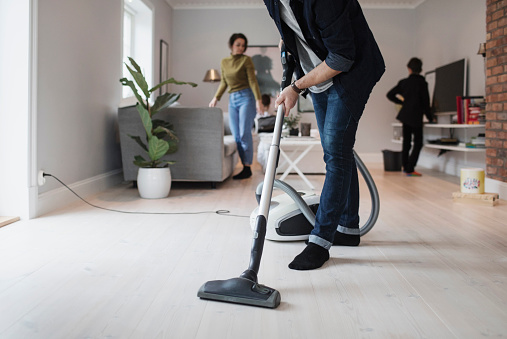HIIPA (not to be confused with the HIPAA health care privacy rule) is a term coined in an editorial published online Sept. 3 by the British Journal of Sports Medicine. It borrows from the idea behind HIIT, which is a workout that alternates between high-intensity and low-intensity activity. But instead of performing these high-intensity intervals during exercise, HIIPA encourages otherwise sedentary people to add a few moderately strenuous physical activities during the course of their regular day. Anything that raises your heart rate counts -- walking up a flight of stairs instead of taking the elevator, carrying in a load of groceries, or doing some heavy cleaning around the house. The editorial's authors, a team of international experts, say the goal is to perform an activity that gets you a little out of breath.
Incidental physical activity can last for as little as a few seconds (the amount of time you take to go up the stairs) to a few hours (like when you're doing yardwork). Activity intervals should be worked in at least three times throughout your day (preferably more).
CHANGING IDEAS ABOUT ACTIVITY
This idea came about in the wake of the 2018 U.S. Physical Activity guidelines, which recognized for the first time that physical activity, done for any amount of time, helps to improve health, says Dr. Meagan Wasfy, an instructor in medicine at Harvard Medical School and a cardiologist at Massachusetts General Hospital. Previous guidelines said that activity had to be completed in 10-minute blocks. HIIPA takes that concept of promoting any type of movement, for even short durations, and merges it with interval training, which has known benefits.
The goal is to help people who might otherwise not do any formal exercise at all to find a sustainable way to increase their daily movement and potentially boost their fitness. The ultimate goal should be to reach the recommended activity levels of at least 150 minutes per week of moderate intensity activity or 75 minutes a week of vigorous activity.
|
Staying active, staying healthy Performing regular physical activity can help you stay active as you age. "If you want to live your longest and have a high quality of life, you'll want to be able to maintain your functional fitness," says Dr. Meagan Wasfy, an instructor in medicine at Harvard Medical School. Incorporating bursts of more intense activity into your day during household activities can help you achieve that goal. "Think of it as training for daily life," she says. You just need to exert more energy during your regular activities. How can you do that? Start by identifying points in the course of your day when you can naturally boost your activity. "Stairs are a good example. It takes a lot of effort to go up the stairs," says Dr. Wasfy. So, if there is an opportunity to take the stairs, try to work it in. "Instead of picking the easier way to do something, try to do something that will require more physical effort," she says. While this approach can be beneficial for everyone, it's an easy way for people who currently don't move much to improve their fitness. "Integrating this into your life does stand to have benefits," says Dr. Wasfy. And over time, sedentary people might be able to use that increased activity level as a stepping-stone toward a regular exercise program, she says. |

IMPROVING FITNESS IN LESS TIME
HIIT, when performed safely and correctly, can promote more rapid fitness gains. Those short high-intensity bursts get your body accustomed to harder workouts, which builds your fitness over time. This exercise pattern has been shown to lower blood pressure and blood sugar, reduce cardiovascular risk factors, and help you maintain muscle and lose weight, particularly belly fat.
While it remains to be seen whether adding intense bouts of more general types of physical activity through HIIPA will produce any of the same health benefits as interval training, it does provide a way to increase overall movement, which experts already know is good for your health. For many people, getting enough exercise is an ongoing challenge. This strategy makes it easy to incorporate more activity into your day, without expending too much time.
"What matters most in the end is that you're out there moving your body," says Dr. Wasfy.







